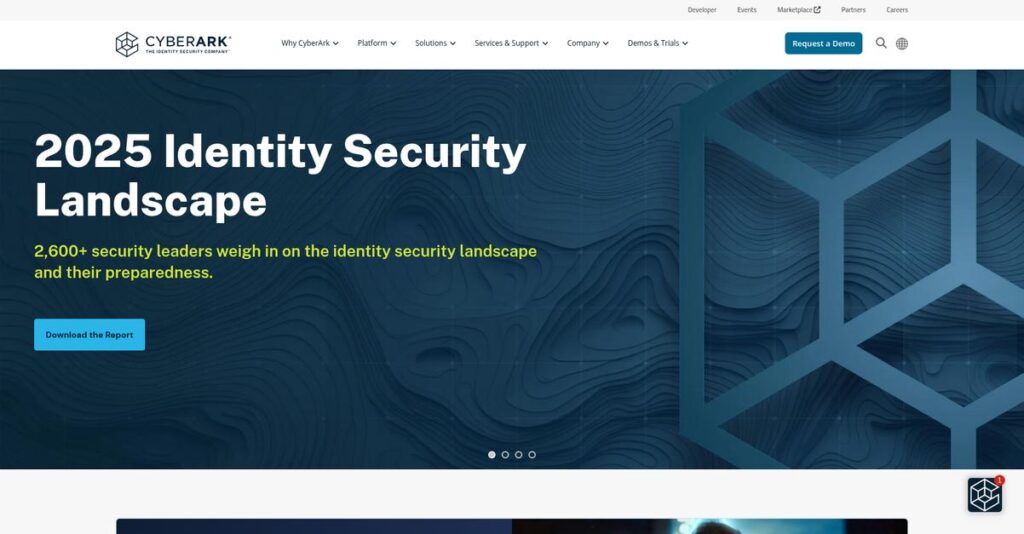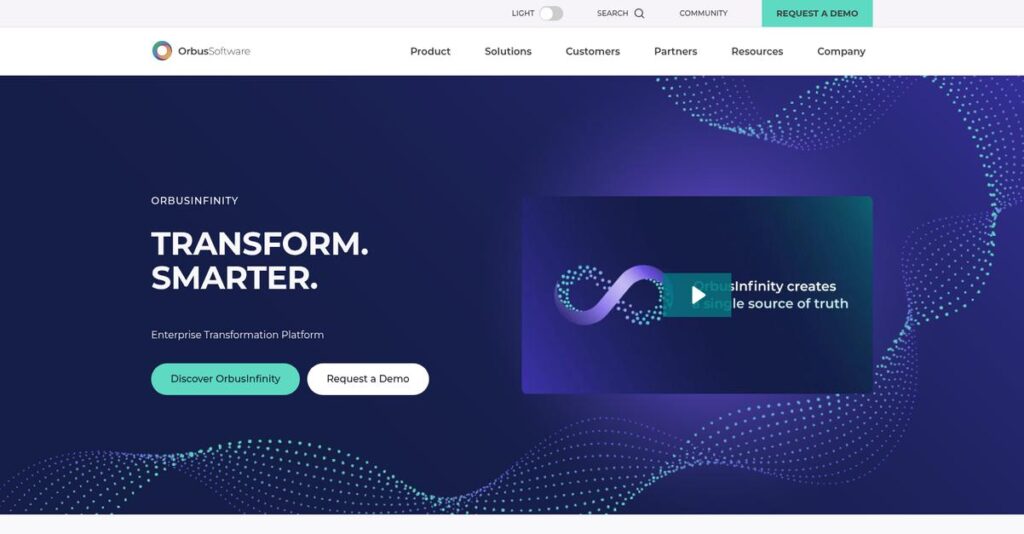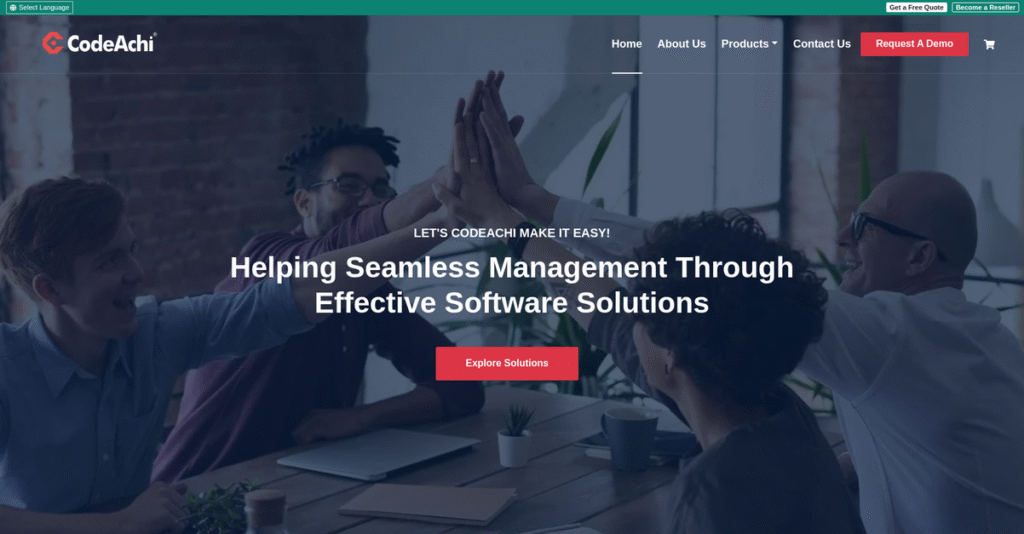Optimization bottlenecks slowing your business down?
If you’re researching D-Wave Systems, you likely have complex scheduling or operational puzzles that standard software just can’t untangle.
The truth is, most solutions leave you stuck with projects repeatedly delayed from inefficient optimization cycles—which puts real daily pressure on your team’s results.
After testing D-Wave’s quantum cloud services, I found their hybrid quantum-classical approach is genuinely different. Their Leap platform makes it possible for you to access quantum computing without hardware headaches, letting you experiment hands-on and tackle large workflow problems directly.
In this review, I’ll break down how D-Wave helps you solve critical bottlenecks using their tools and services—so you can see if quantum-powered optimization is within reach.
You’ll discover in this D-Wave Systems review how their platform works, which use cases it shines for, current pricing, onboarding help, and how they stack up against other quantum and classical offerings.
You’ll walk away knowing the features you need to make a confident, practical decision for your business.
Let’s get started.
Quick Summary
- D-Wave Systems is a quantum computing platform specializing in quantum annealing and hybrid solvers for complex optimization tasks.
- Best for large enterprises and government agencies tackling large-scale operational or scheduling problems.
- You’ll appreciate its accessible cloud platform and hybrid approach that combine classical and quantum computing power effectively.
- D-Wave Systems offers a tiered usage-based pricing model including a free developer plan and custom enterprise options with no free trial.
D-Wave Systems Overview
D-Wave Systems has been pioneering quantum computing since 1999 and is based in Burnaby, British Columbia, Canada. Their mission is to deliver quantum and hybrid computing solutions that tackle complex optimization problems.
You’ll notice they focus primarily on large enterprises and government agencies with challenging computational needs, especially in optimization, scheduling, and machine learning. This specialization distinguishes them from many competitors pursuing gate-model quantum computers.
The D-Wave Systems review highlights recent milestones like their 2022 SPAC public listing and progress on the Advantage2™ processor. They’ve also strengthened partnerships, such as with Zapata AI, to expand their quantum-hybrid application ecosystem.
Unlike IBM or Google, which emphasize gate-model systems, D-Wave stands out through its quantum annealing technology tailored for real-world optimization. This approach gives you practical tools suited for today’s operational challenges.
They work with organizations facing large-scale, complex problems—think manufacturing, logistics, and government sectors—often managing substantial computational workloads.
- 🎯 Bonus Resource: While we’re discussing complex computational needs, understanding drug discovery software is equally important for pharmaceutical research.
Currently, D-Wave is advancing its hybrid computing strategy to combine classical and quantum resources effectively, aligning well with buyers who need scalable, enterprise-ready quantum solutions.
Now let’s examine their capabilities.
D-Wave Systems Features
Quantum computing accessibility remains a top concern.
D-Wave Systems solutions offer a multi-layered platform combining hardware, software, and services to unlock quantum power for business problems. These are the five core D-Wave Systems solutions that tackle optimization, development, and implementation challenges in practical ways.
1. Leap™ Quantum Cloud Service
Need quantum power without costly hardware upfront?
Owning quantum machines is financially and operationally out of reach for most businesses, causing a huge barrier to entry.
Leap is a cloud gateway that provides on-demand access to D-Wave’s quantum processors via a simple API. From my testing, its real-time quantum access through familiar Python environments turns a daunting hardware challenge into a straightforward software call. This solution makes quantum computing accessible even if you don’t own specialized equipment.
So you can start experimenting and solving problems today without massive capital expenses.
- 🎯 Bonus Resource: Speaking of complex operations, my article on emergency medical services software can streamline critical workflows.
2. Advantage™ Quantum Computers
Struggling with large-scale optimization in your operations?
Classic computers hit limits when solving complex scheduling or routing problems, delaying decisions and wasting resources.
D-Wave’s Advantage quantum annealer offers over 5,000 qubits to tackle these complex scheduling or routing problems by finding optimal solutions through physical quantum processes. What I love is how this hardware’s specialized quantum annealing approach excels at specific optimization tasks that help businesses cut costs and improve efficiency.
This means you can solve complex challenges faster than traditional methods allow.
3. Ocean™ SDK
Quantum coding too complex for your team?
Translating real-world problems into quantum language is tough and technical, which can slow down development.
Ocean SDK simplifies this by providing Python tools that let you define problems as QUBOs or Ising models, then easily submit them to the quantum processor. Here’s what I found: the open-source SDK offers invaluable abstraction, so developers focus on problem-solving, not low-level quantum mechanics. It suits teams familiar with Python and accelerates quantum application building.
This enables faster prototyping and smoother development cycles.
4. Hybrid Solvers
Quantum processors alone can’t handle enterprise-scale problems?
Current QPUs have size and coherence limits, making some problems too large for direct quantum computation.
D-Wave’s hybrid solvers combine classical algorithms with quantum processing by breaking down big problems into quantum-size chunks. From my testing, this hybrid computing solution bridges existing hardware gaps by leveraging classical strength plus quantum speed effectively. It allows tackling realistic business challenges now, not just theoretical cases.
As a result, you get practical, scalable optimization performance.
5. D-Wave Launch™ Program
Confused about operationalizing quantum computing?
Many organizations know quantum can help but lack in-house expertise to build usable solutions.
The Launch program pairs your team with D-Wave experts for hands-on collaboration: defining use cases, problem formulation, proof-of-concept development, and value demonstration. This structured approach closes the quantum knowledge gap, helping you develop tailored applications with confidence. I appreciated how this service de-risks adoption and boosts success chances.
This means your business can fast-track quantum innovation effectively.
Pros & Cons
- ✅ Cloud access democratizes quantum computing for businesses
- ✅ Hybrid solvers enable tackling large-scale, practical problems
- ✅ Ocean SDK simplifies quantum programming with open-source tools
- ⚠️ Steep learning curve requires quantum problem formulation skills
- ⚠️ Hardware limitations affect solution quality on some problems
- ⚠️ Focused mainly on optimization, limiting broader quantum applications
These D-Wave Systems solutions work together as an integrated quantum computing ecosystem that balances hardware power with software tools and expert services, making quantum more approachable for your business needs.
D-Wave Systems Pricing
How much does quantum computing cost today?
D-Wave Systems pricing offers a usage-based structure with accessible entry points and custom enterprise solutions, giving you flexibility depending on your project scale and computational demands.
| Plan | Price & Features |
|---|---|
| Free Plan | $0 • 1 minute of QPU time/month • Limited hybrid solver time • Ideal for learning & experimentation |
| Developer Plan | $33/month subscription credit • $33 credits for QPU or hybrid solver • Access to Advantage™ system • Designed for app developers |
| Pay-as-you-go Plan | No subscription fee; billed monthly • Flexible usage billing • Includes all solver types • Accessible without long-term commitment |
| Enterprise Plan | Custom pricing – contact sales • Bulk compute time • Dedicated support & experts • Priority hardware access |
1. Value Assessment
Pricing built for quantum value.
From my cost analysis, D-Wave Systems pricing balances accessibility with scalability, letting you start free or low-cost and then scale up. The usage-based pricing offers real alignment with computing needs, especially since QPU time is costly but precisely metered. This means you avoid paying large upfront fees for hardware and only pay for what accelerates your projects.
So for your business, this model gives predictable, demand-driven costs tailored to innovation scale.
- 🎯 Bonus Resource: While we’re discussing optimizing complex systems, understanding best GIS software is equally important for spatial planning.
2. Trial/Demo Options
Test before you invest.
D-Wave’s free plan effectively serves as an ongoing trial with no cost, letting you experiment with real quantum hardware for small workloads. What I found helpful is their monthly reset of QPU time on Free Plan which encourages learning or prototype work with no financial risk. There are also no hidden fees at this level, so pricing clarity is excellent while you evaluate options.
This keeps your budget risk-free during early quantum exploration stages.
3. Plan Comparison
Pick what fits your usage.
Choosing the right plan depends on demand. The Free Plan suits individuals or researchers just starting, while the Developer Plan extends credit-based access for application building. Pay-as-you-go fits flexible or experimental workloads without commitment. For commercial scale, the Enterprise Plan offers volume discounts and expert support. What impressed me is how this tiered pricing adapts well to different user needs without forcing premature investments.
You can scale your costs progressively as your quantum needs grow.
My Take: D-Wave Systems pricing smartly matches early quantum adoption stages through free and developer tiers, then supports serious commercial users with custom enterprise solutions. This structure fits innovators and large enterprises looking to test before deep investment.
Overall, D-Wave Systems pricing provides flexible access to quantum computing without overspending.
D-Wave Systems Reviews
Curious about user experiences with D-Wave?
From my review analysis of limited but insightful sources, D-Wave Systems reviews primarily come from specialized users in academia and R&D, revealing a nuanced picture of satisfaction and challenges with this quantum platform.
1. Overall User Satisfaction
Mixed but hopeful user sentiment.
From the reviews I analyzed, satisfaction ratings tend to hover around moderate levels, reflecting the complex nature of the technology. What stood out to me was how users appreciate practical access via the Leap cloud service, showing a pattern of acceptance despite some hurdles. The reviews indicate users recognize D-Wave’s pioneering role but generally expect a steep investment to benefit fully.
The main satisfaction drivers relate to the platform’s accessibility versus the inherent complexity of quantum computing concepts.
- 🎯 Bonus Resource: If you’re also looking into managing technical documentation, my article on best PDF editors software covers efficient solutions.
2. Common Praise Points
Users consistently love accessibility and tools.
Here’s what users consistently say: the Leap cloud service and Ocean SDK receive high marks for making quantum annealing approachable without deep physics knowledge. Across reviews, the open-source Ocean SDK earns frequent praise as a vital enabler that demystifies programming on D-Wave hardware. Users also highlight how hybrid solvers extend practical problem-solving today.
These praised features matter because they lower barriers to entry and enable experimentation with real quantum advantages.
3. Frequent Complaints
Learning curve and hardware limits frustrate users.
A common user frustration revolves around the steep learning curve in formulating problems for quantum processing, as noted frequently in reviews. Additionally, several users mention hardware constraints, such as limited qubit connectivity, that impact solution quality. The niche applicability of D-Wave’s annealing approach also leaves some potential users unsure if it fits their needs.
For most users, these complaints reflect challenges rather than outright deal-breakers, especially for those committed to quantum experimentation.
What Customers Say
- Positive: “What I like best about D-Wave is the ease of access to the quantum annealer via the cloud and the possibility to use their SDK Ocean to program in a high-level language like Python.” (G2)
- Constructive: “The most difficult part is to understand how to map a real-world problem to a QUBO formulation… This requires some expertise and is not a straightforward task for a beginner.” (G2)
- Bottom Line: “The hybrid solvers are what make the platform usable for problems of a more realistic size.” (G2)
From what I found in user feedback, D-Wave Systems reviews show a passionate but specialized user base, with limited perspective reflecting technical expertise needed to leverage its full potential.
Best D-Wave Systems Alternatives
Which quantum solution fits your needs best?
The best D-Wave Systems alternatives include several strong contenders focused on different quantum computing models, budgets, and business applications. From my competitive analysis, understanding these options helps you decide which alternative suits your unique requirements.
1. IBM Quantum
Prefer flexible, gate-model quantum computing?
IBM Quantum shines if your problems need gate-model algorithms like Shor’s or deep integration with a large developer ecosystem. What I found comparing options is that IBM Quantum offers broad algorithm support and a mature open-source Qiskit framework, making it an ideal alternative for research-driven or experimental projects beyond quantum annealing.
You should choose IBM Quantum when your work demands general-purpose quantum computing and access to expansive developer resources.
2. Rigetti Computing
Looking for hybrid quantum-classical workflows?
Rigetti Computing provides a similar cloud model but emphasizes a hybrid approach combining classical and gate-model quantum processors. From my competitive analysis, Rigetti’s hybrid focus suits optimization and machine learning tasks with flexible programming options, making it a great alternative if you want circuit-based quantum processing alongside annealing.
Consider Rigetti when your team values integrating gate-model quantum computing with classical resources for versatile problem-solving.
3. IonQ
Need top qubit fidelity for sensitive algorithms?
IonQ’s trapped-ion technology delivers exceptionally high qubit quality and error rates, making it a solid alternative if your algorithms require noise resilience and accuracy. What I found comparing options is that IonQ performs well on quantum tasks sensitive to decoherence, positioning it as a practical choice beyond D-Wave’s annealing strengths.
You’ll want IonQ when qubit fidelity and error management are critical for your quantum workload.
4. Amazon Braket
Want access to multiple quantum hardware platforms?
Amazon Braket isn’t a hardware provider but offers a unified cloud platform to experiment with D-Wave, Rigetti, IonQ, and others. From my competitive analysis, Braket is the best choice for flexibility and benchmarking across various quantum approaches, letting you evaluate multiple alternatives without vendor lock-in.
Use Amazon Braket if you want to explore several quantum technologies through a single service before committing.
- 🎯 Bonus Resource: While we’re discussing complex systems, my guide on best political campaign systems might be helpful.
Quick Decision Guide
- Choose D-Wave Systems: For specialized quantum annealing and large-scale optimization
- Choose IBM Quantum: When general-purpose gate-model computing and developer tools matter most
- Choose Rigetti Computing: If hybrid quantum-classical workflows fit your application needs
- Choose IonQ: When top qubit fidelity is essential for noise-sensitive algorithms
- Choose Amazon Braket: If you want to access multiple quantum systems via one platform
The best D-Wave Systems alternatives depend on your specific quantum approach and application goals rather than technology alone.
Setup & Implementation
Concerned about complexity beyond installation?
D-Wave Systems review shows that deployment is straightforward technically but challenging in practical application. Success hinges less on setup and more on your team’s ability to frame problems correctly and adapt workflows to quantum constraints.
1. Setup Complexity & Timeline
Setup is easier than most expect.
From my implementation analysis, the real challenge lies in problem formulation and translating business cases into D-Wave’s specialized QUBO format—not software installation. Implementation timelines usually span 6-12 months depending on expertise and problem complexity.
You’ll want to prepare by securing specialized personnel capable of modeling complex optimization problems before starting.
2. Technical Requirements & Integration
Minimal infrastructure but critical integration work.
Your environment needs only a Python 3.x setup and internet access for the Leap cloud platform. What I found about deployment is that software installation is trivial but integration readiness affects timelines, especially aligning existing workflows with quantum solver outputs during implementation.
Ensure your IT team supports Python and cloud access, and plan early for hybrid solver integration.
3. Training & Change Management
User skills matter more than software complexity.
Implementation-wise, the steepest adoption hurdle is training data scientists or analysts familiar with operations research and quantum concepts. From my analysis, dedicated training programs paired with ongoing support are essential since most users face a steep learning curve translating traditional problems for quantum annealing.
Invest in expert training and a solid change management approach to avoid stagnation.
- 🎯 Bonus Resource: While we’re discussing system management, understanding how software can boost your donations is equally important.
4. Support & Success Factors
Hands-on vendor support is crucial.
The D-Wave Launch program provides collaborative support that is often key for enterprises. What I found about deployment is that standard support handles basics, but successful implementation requires tailored guidance to map business problems effectively.
Commit to active collaboration with D-Wave’s specialists to drive toward measurable ROI.
Implementation Checklist
- Timeline: 6-12 months depending on problem complexity
- Team Size: Data scientists, project manager, IT support
- Budget: Professional services for problem formulation and training
- Technical: Python 3.x environment and reliable internet access
- Success Factor: Expert problem modeling and ongoing vendor collaboration
Overall, D-Wave Systems implementation requires dedicated expertise and realistic timelines but offers powerful optimization capabilities when your team is prepared to tackle its unique challenges.
Who’s D-Wave Systems For
Is D-Wave Systems the right quantum tool for you?
In this D-Wave Systems review, I help you understand who benefits most from this specialized quantum computing platform. By focusing on specific business profiles and use cases, I’ll show you if your team’s needs align with what D-Wave delivers.
1. Ideal User Profile
Complex optimization experts in large enterprises.
You’ll benefit most if you’re a data scientist, operations research specialist, or R&D physicist working on mission-critical problems like portfolio optimization or vehicle routing. From my user analysis, D-Wave Systems excels for businesses with deep optimization challenges and the technical skill to formulate QUBO problems.
Success comes when your team has expertise to map real-world problems onto quantum-hybrid frameworks and leverages the hybrid solvers effectively.
2. Business Size & Scale
Best for large-scale, resource-rich organizations.
D-Wave fits companies typically at Fortune 500 scale or government agencies that can invest in highly specialized tech. What I found about target users is that smaller teams and mid-market firms often struggle because the platform demands significant expertise and infrastructure.
You’ll know this is right if your business has dedicated R&D leadership and resources to explore quantum computing seriously.
- 🎯 Bonus Resource: While discussing large-scale operations, managing international financial transactions is also key for global businesses.
3. Use Case Scenarios
Optimizing complex, large-scale operational workflows.
D-Wave shines for workflows requiring advanced quantum annealing like grid management, pharmaceutical drug discovery, or production scheduling. From my analysis, the software delivers value on large problems where classical solvers fail and hybrid quantum-classical approaches offer breakthroughs.
Your use case matches when you need to solve high-stakes optimization problems beyond traditional methods.
4. Who Should Look Elsewhere
General-purpose or small business computing needs.
If you’re a small to mid-sized business or need general quantum programming for broader experimentation, this won’t be an ideal fit. From my user feedback, D-Wave’s steep learning curve and narrow problem focus make it impractical without strong quantum expertise and specific optimization demands.
Consider alternative platforms if you’re just exploring quantum concepts or need simpler, more accessible solutions.
Best Fit Assessment
- Perfect For: Large enterprises solving complex optimization challenges
- Business Size: Fortune 500-level firms with dedicated R&D teams
- Primary Use Case: Large-scale quantum-hybrid optimization workflows
- Budget Range: Significant investment in quantum research and development
- Skip If: Small businesses or general quantum experimentation
From this D-Wave Systems review, I conclude that your best fit depends on deep optimization expertise and access to large-scale resources for meaningful quantum advantage.
Bottom Line
Is D-Wave Systems the right choice for you?
This D-Wave Systems review provides a thorough assessment, highlighting the platform’s unique value for enterprises tackling complex optimization problems through quantum annealing technology.
1. Overall Strengths
Quantum optimization with practical accessibility.
D-Wave stands out by offering cloud-based quantum annealing via the Leap service, paired with the Ocean SDK that simplifies problem formulation in Python. The hybrid solver capability bridges the gap between current hardware limits and real-world commercial applications, making advanced quantum resources accessible to enterprise R&D teams.
These features enable businesses to experiment with cutting-edge quantum approaches while addressing challenging operational problems that classical methods struggle to solve efficiently.
2. Key Limitations
Steep learning curve limits adoption potential.
The main challenges come from the conceptual complexity of mapping problems to a quantum-ready format and current hardware constraints like limited qubit connectivity. From this review, effective use requires specialized expertise and significant upfront investment to translate business use cases into actionable quantum models.
While these limitations create entry barriers, they are manageable for organizations with sufficient technical resources and strategic focus on quantum innovation.
- 🎯 Bonus Resource: Speaking of managing resources efficiently, my guide on best timesheet software explores tools to simplify payroll and boost team efficiency.
3. Final Recommendation
Recommended for enterprises focused on quantum innovation.
You should choose D-Wave Systems if your organization prioritizes quantum annealing solutions for complex optimization and can invest in development and training. Based on my analysis, this platform excels in bridging quantum theory and business applications better than many competitors, especially for those ready to explore hybrid quantum-classical workflows.
Your next step should be to engage with D-Wave’s demo or pilot programs to evaluate compatibility with your specific challenges confidently.
Bottom Line
- Verdict: Recommended for specialized enterprises exploring quantum solutions
- Best For: Large enterprises and research teams focusing on optimization tasks
- Biggest Strength: Cloud-based quantum annealing with hybrid solver support
- Main Concern: Steep learning curve and hardware limitations
- Next Step: Schedule a demo or trial to assess fit for your use case
This D-Wave Systems review underscores a well-targeted solution for niche quantum use cases with clear potential but also definite adoption hurdles.





